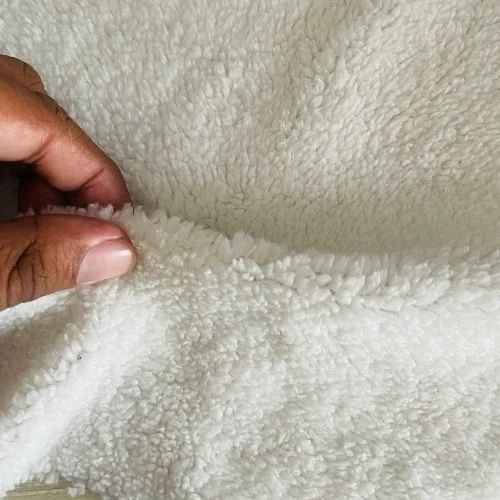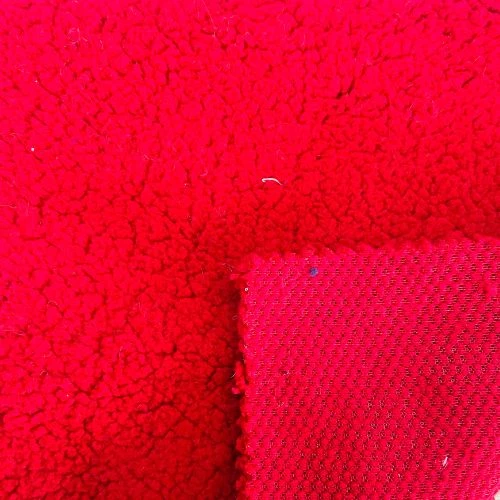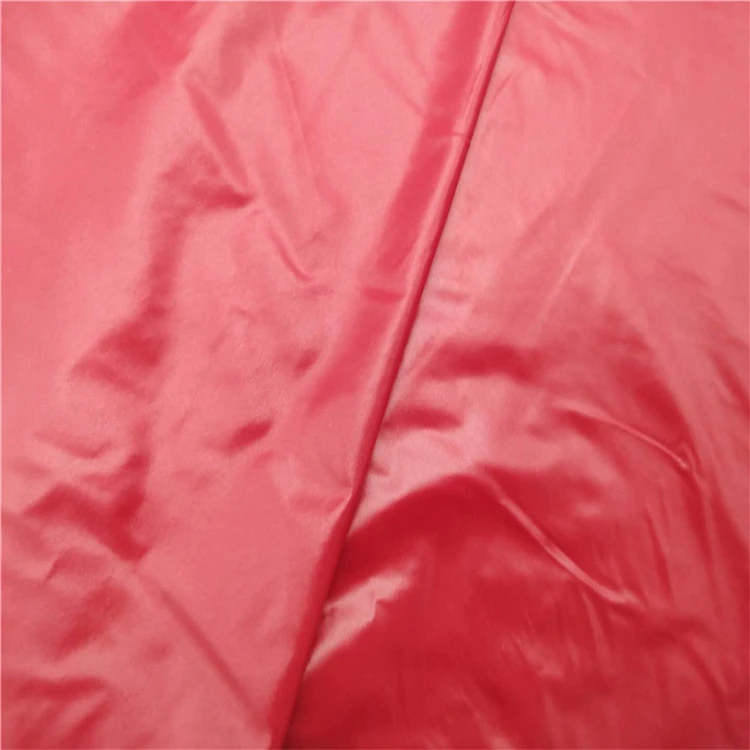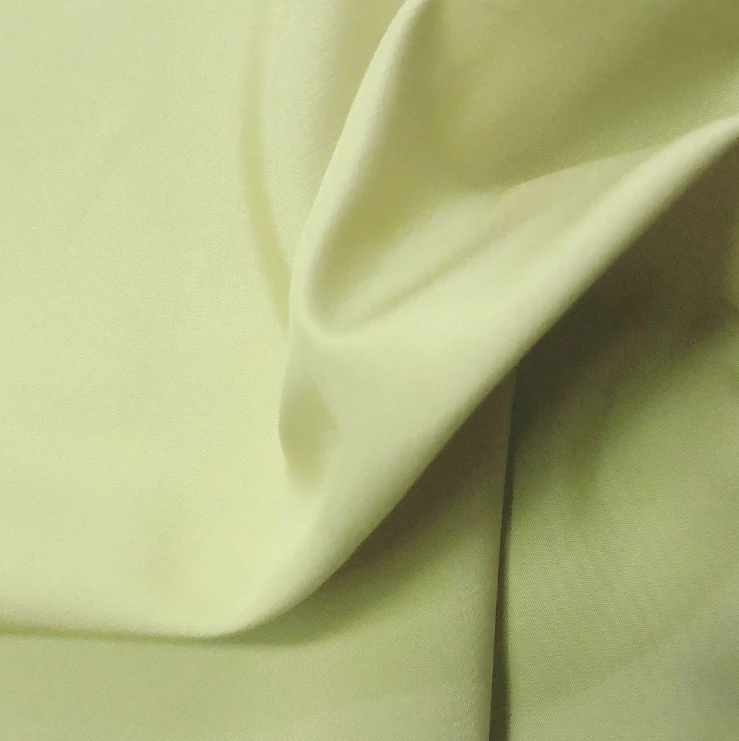When you notice the term Sherpa fabric, the first thing that comes to your mind is Tibetan ethnic groups. The Nepalian Sherpa who guides us to climb mountains in the Himalayas and Mount Everest is well known to us. In terms of sherpa fabric, the name is obtained from its resemblance to the wool-lined clothing worn by the Nepali Sherpa. But nowadays it's widely popular all over the apparel industry. So, let’s start a journey with sherpa fabric.
Table Of Contents
What is sherpa fabric?
Sherpa fabric resembles the wool-lined clothing worn by the tribe sherpa. The word sherpa (sherwa) comes from the Nepalian Sherpa language words ‘Shyar’ and ‘Pa’. These words basically indicate the geographical origin of Eastern Tibet of sherp. But, it's totally different from what the Sherpa people wear.

Sherpa fabric is known as lamb fabric, faux-sheepskin, faux sherpa, and faux shearling. It is a super soft warm fabric as well as lightweight. Sherpa makes any product a cozier feel, making it perfect to use during the winter season. It’s wonderfully performed in freezing temperatures. Super soft and fluffy sherpa fabric is popularly used to line clothing, winter wear, and even functional clothing.
Here is the comparison table of sherpa material vs fleece.
|
Attribute |
Details |
|
Fabric Also Known As |
Faux Sherpa, Teddy Fabric, Faux Fleece, Imitation Wool |
|
Manufacturing Process |
Knitted fabric; brushed to create a thick, fluffy pile; often laminated for structure |
|
Appearance |
Soft, fluffy, and wool-like with a textured surface; dense pile |
|
GSM Range |
200-400 GSM |
|
Composition Range |
Primarily polyester or polyester blends with acrylic or spandex |
|
Construction Range |
Knit pile construction; double-sided or single-sided pile variations |
|
Functionality |
Available with TPU, PU, AC, or water-resistant finishes for added durability |
|
Possible Thread Density Range |
Medium to high density; varies based on thickness and application |
|
Count Variations |
Commonly in the range of 20D-80D |
|
Full Width |
57/58” or 59/60” |
|
Cuttable Width |
Typically 56-59 inches, depending on full width |
|
Fabric Breathability |
Moderate; depends on pile density |
|
Moisture-Wicking Abilities |
Limited; some variants have enhanced moisture-wicking treatments |
|
Heat Retention Abilities |
High; retains warmth due to dense, fluffy pile |
|
Stretchability |
Limited to moderate; some fabrics include spandex for stretch |
|
Prone to Pilling/Bubbling |
Moderate; pilling may occur over time with heavy use |
|
Country Where First Produced |
USA, around the 1970s |
|
Biggest Exporting Country Today |
China |
|
Recommended Washing Temperatures |
Cold to warm wash (30°C); avoid high heat in drying |
|
Applications |
Jackets, coats, hoodies, blankets, linings, winter accessories, pet beds, and outerwear |
Types of Sherpa Fabric
Based on structure, sherpa fabric could be classified into 4 types. They are as
- Hard Sherpa Fabric: Used as hard shell in Winter Jacket
- Soft Sherpa Fabric: Lining, Denim Jacket Hoodie
- One Side Sherpa: Loop or brush on one side
- Both Side Sherpa: Loop or brush on both side
What is sherpa fabric made of?
Sherpa fabric refers to a synthetic fiber made of knit fabric from pure polyester (100%). It could be made of cotton, bamboo, polyester, acrylic, or a blend of polyester and other synthetic fiber.

Sherpa material has long and wide piles. It contains two sides. The facing side has long piles as well as the stitched woolly side with a soft and bumpy texture. The other side has a Jacquard smooth-knit shell. The combination of the two provides a sherpa soft fluffy feel, warm and durable.
The quality of sherpa fabric is very similar to fleece and wool fabric though it is warmer than wool. But sherpa doesn't need to be hurt in the production process, which is the specialty of its name. It’s the more animal-friendly alternative, and much cheaper than genuine wool or fur although it gives a feeling just as snuggly as the original one.
Sherpa vs fleece

Sherpa is a kind part of the fleece family. It has some unique properties to help stand out from the rest of the sibling's sherpa. Consequently, we can’t say a special style of fleece fabric. Here are some differences between sherpa and fleece:
|
Category |
Sherpa |
Fleece |
|
i. Origin |
Derived from polyester fibers. |
Natural one derived from sheep’s four or wool and man-made from polyester & cotton, lycra, and other fibers. |
|
ii. Fiber Nature |
Man-Made synthetic fiber |
Man-made but Could be natural also |
|
iii. Existence |
Approximately 40 years in the clothing market 40 years. |
Since about 1974 |
|
iv. Construction from other fibers
|
could be made of cotton, polyester, acrylic, or a blend of polyester and other synthetic fiber. |
Could be made from lending other fibers like cotton, hemp, polyester, rayon, and wool. |
|
v. Texture |
Soft and can be rough |
Soft can be rough, waterproof, and stretchable. |
|
vi. Insulating |
very warm material |
Not as warm as a sherpa. Except maybe polar fleece |
|
vii. Look |
Fluffy and heavier than fleece |
Usually smooth and thin. |
|
viii. Cost |
Relatively inexpensive |
Not that expensive. |
|
ix. Cleaning |
Coldwater wash, no need for a dryer. |
Same |
|
x. Eco friendly |
Perfect eco-friendly alternative to fleece |
The natural one is eco-friendly but it hurts animals |
|
xi. Application |
More for lining than anything else, especially for winter clothing and functional clothing. |
Used in a variety of products. |
So, sherpa vs fleece which is softer? Sherpa is softer than fleece due to its plush. The fluffy texture mimics natural wool. This makes it feel cozier and more luxurious against the skin. Sherpa is designed with a high-pile surface. It gives a cloud-like softness ideal for cold-weather comfort. Fleece is soft has a smoother, less plush finish. That makes it slightly less velvety to the touch. Sherpa’s softness is perfect for blankets, linings, and jackets where a snug feel is desired.
But there is a material called sherpa fleece. Sherpa fleece is a synthetic fabric with a fluffy, wool-like texture, designed for warmth and softness, often used in jackets, linings, and blankets.
Characteristics of Sherpa
- Sherpa loft makes sherpa-lined providing incredibly warm warmth and comfort.
- Soft texture touches smooth, stylish, and full of elasticity.
- No shedding, High color fastness, No fading.
- Mimics the look of wool, but doesn't use animal fur.
- A better alternative to animal fiber.
- Provide excellent insulation.
- Lightweight and less bulky.
- Good drape, comfortable, and highly breathable.
- It Wicks moisture and dries quickly.
- Easy to maintain.
- Convenient for washing both by hand and machine washed.
If you want warmer clothing without harming an animal, sherpa is the best choice for you. It will provide your required warmth without unnecessary animal cruelty. Sherpa fabric never is compromised with quality either as it is soft, tough, durable, and long-lasting.
Application of Sherpa Fabric
- To manufacture winter outerwear items such as jackets, coats, and vests
- Used to produce jackets for military personnel
- Used in producing military blankets for soldiers who fight in the snow areas to keep them warm.
- Used in tents to manufacture walls warm and cozy.
- Use for winter civilians protection from cold weather such as snow or freezing winters
- Used in making gloves, hats, shoes, socks, etc which protect the feet of people from harsh weather conditions.
- Produce socks which are mostly worn by sportsmen who play in cold climates.
- Used in Lining to feel warm
- Used under helmets to provide more warmth during colder weather sports or just daily activities.
- Inside of Hoodie
- Used in Shell of the apparel
- To produce Towels.


























Comments - 00
Leave A Reply
Thanks for choosing to leave a comment.